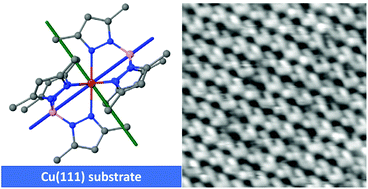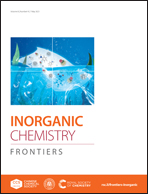Robust magnetic anisotropy of a monolayer of hexacoordinate Fe(ii) complexes assembled on Cu(111)†
Abstract
The measurement of the magnetic anisotropy of [Fe{(3,5-(CH3)2Pz)3BH}2], where Pz = pyrazole, in its high spin state (S = 2) by X-ray Magnetic Circular Dichroism (XMCD) spectroscopy when assembled as an organized monolayer on Cu(111) shows the presence of a hard axis of magnetization (positive axial zero-field splitting – ZFS – parameter D). Combining magnetization and multifrequency electron paramagnetic resonance spectroscopy on a reference compound, [Fe{(3-(Ph)Pz)3BH}2], of the same family and ab initio wave function based theoretical calculations, we demonstrate that the magnetic anisotropy of the assembled molecules is not affected when they are present at the substrate/vacuum interface. Comparing our results with those of a reported complex having an almost identical FeN6 coordination sphere but an easy axis of magnetization (corresponding to a negative D value), we show that the nature of the magnetic anisotropy (easy/hard axis) is governed by the torsion angle (Ψ) defined by the relative orientation of the pyrazole five-membered rings to the pseudo three-fold axis of the molecules. The rigidity of the (Pz)3BH tridentate ligands, where the three pyrazole moieties are held by the BH group, allows only very slight changes in the torsion angle even when the molecules are in a dissymmetric environment such as an interface. This is the origin of the robust magnetic anisotropy of this family of compounds.



 Please wait while we load your content...
Please wait while we load your content...